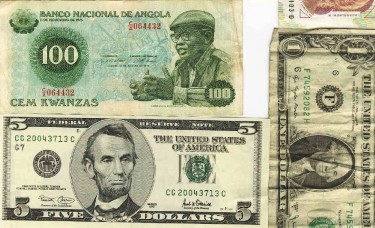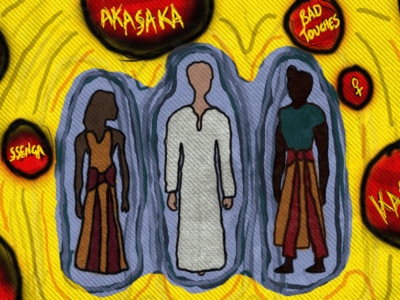Last May the National Bank of Angola (BNA) brought into circulation coins in denominations of 5 kwanzas, to join the 1, 2, 10 and 50 kwanza coins, which are circulating again.
The author of the blog After all I’m just a boy walking around [pt] explains the purpose of reintroducing of the coins:
Com este objectivo pretende-se defender o consumidor, contribuindo para maior rigor nos trocos e menores perdas por parte deste. Ainda hoje ao almoço, a conta acabava em 7,50 kwanzas o que não me fez receber os 2,50 kwanzas a que tinha direito (mesmo sendo um valor residual, somado muitas vezes, dá um valor grande). Num país com extrema pobreza parece-me uma medida adequada a proteger os mais pobres.
The use of the coins has caused some suspicion among the population. According to the newspaper Jornal de Angola [Angola Newspaper, pt], “for many, they are a hurdle, because shopkeepers refuse to accept them”. However there are those who defend the circulation of the coins, arguing that they should be circulating in the formal and informal market, due to the “poor conservation of small bills” which are currently in circulation.
Afonso Loureiro of the blog Aerograma writes [pt] on this matter:
Faz sentido que se cunhem moedas para substituir as notas de denominações mais baixas, que se estragam muito depressa. Por trocar de mãos muitas vezes por dia, a vida média de uma nota de 50 kwanzas deve ser de apenas alguns meses, por exemplo.
The question of coins in Angola has inspired artists, such as Manuel Guedes dos Santos Lima, who in his poem “Kwanza” makes a poetic joke about the Kwanza (the biggest river in Angola), and the national currency of the same name. The author of MultiBlog published his poem and says that “Angola’s real currency is the dollar”.
In fact, with the coins in circulation, the Angolan government is trying to curtail the use of the currency which really has reign over the country, the dollar. The American currency has found its way into the national market thanks to the political and military instability from which Angola has suffered; the country was for almost 30 years absorbed in war, a struggle between the two major national political parties, Unita and MPLA.
According to the newspaper O País [The Country, pt], price-setting policy is still under evaluation due to the coexistence of the two currencies in Angolan daily life, a practice which has its roots in the habits of the general population, and although advised against by the National Institute of Consumer Protection (INADEC, Instituto Nacional de Defesa do Consumidor), it is naturally difficult to change.









2 comments
This was very informative & amusing, as well as helped me to find out more about the country from which a friend in my circle originates from. There are also coin collectors amongst my network who would also like this story, and I shall pass it on to them. I’m glad I met you, Kitty Garden, when I read the blog about the Belo Monte problems.